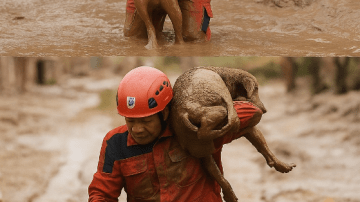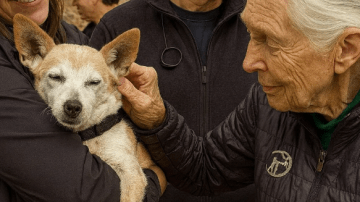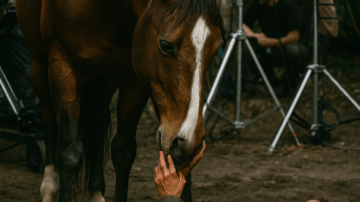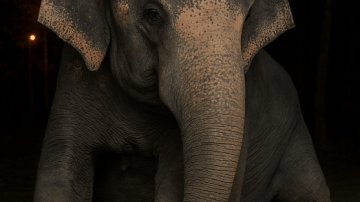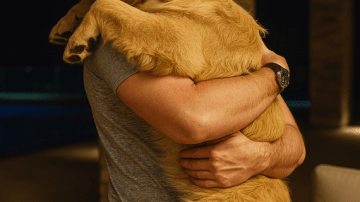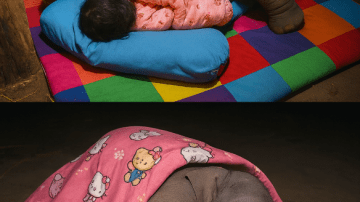“Help me, there’s a dog lying in the ditch.”
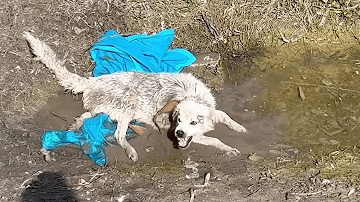
The plea reached me in the trembling voice of a young girl. I could hear fear, urgency, and desperation tangled together in her words. I did not expect that such a call would lead me into one of the most unforgettable rescues of my life.
When I arrived, I froze at the sight before me. A dirty, exhausted dog lay at the bottom of a ditch, her chest rising in shallow, labored breaths. A rope, cruelly knotted, was pulled tightly around her neck. Every time she tried to move, it strangled her further. My throat burned, and before I knew it, I was crying like a child. The pain she was enduring was written all over her frail body.
But rescuing her wasn’t simple. She was terrified—skeptical of my intentions, snapping and growling whenever I inched closer. She had likely known only cruelty from human hands. When I tried to speak softly, hoping my voice might calm her, she flinched as if expecting another blow. In her eyes was a deep mistrust, a haunting fear that I might hurt her again.
She struggled to rise, but her body betrayed her. Her legs quivered, then gave way. Realizing I could not do it alone, I called for backup. Together, we placed a mat beneath her to lift her out of the ditch without causing further panic. Slowly, her breathing began to steady, though her body trembled from exhaustion.
At the clinic, the veterinarians moved quickly. For their safety, a muzzle was gently fastened around her snout. They examined the rope still embedded in her neck, tightening like a cruel reminder of her suffering. Step by step, they stabilized her condition. For a moment, the chaos felt like a nightmare, but there was hope in the way she finally allowed me to stroke her muddy fur.
Then came the X-rays. When the images developed, the room fell silent. Her pelvis and one leg were broken in complicated fractures. But what stunned us more was another discovery—she was a nursing mother. Somewhere, her puppies were waiting, hungry and afraid.
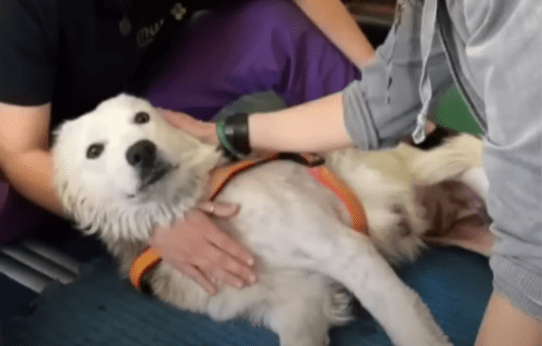
The question tore through me: Where were her babies?
Two local farmers gave us a lead. They had often seen this dog wandering toward a particular area. Following their directions, we listened closely. That’s when we heard it—the faint, heartbreaking cries of puppies.
I pushed through the brush, and my eyes filled with tears once more. A tiny pup lay curled in the cold dirt, whimpering, waiting for a mother who could not come. The sight broke me. These fragile beings had endured the freezing night alone, huddling together like lost children.
Within minutes, I found another pup nearby, equally frail but still alive. Then came the third, hidden deep within a cactus bush. My hands were scratched and bleeding as I tried to reach him, but pain didn’t matter. Finally, coaxed by the smell of food, the puppy crawled out to safety.
Three small lives saved. Three souls who had clung to hope despite the odds.
Back at the clinic, their mother lay under anesthesia. Surgeons worked with steady hands, securing her pelvis and leg with splints. Hours later, when she awoke, her eyes widened as she saw her pups. The reunion was overwhelming. Despite her pain, she wagged her tail faintly and pressed her nose against them, as if counting each one. For the first time, I understood why she had fought so fiercely to stay in that ditch—she hadn’t been protecting herself, she had been protecting them.
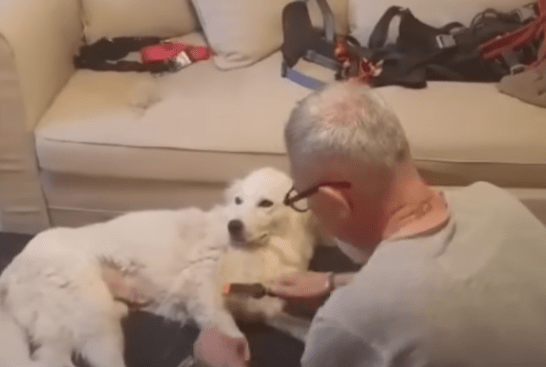
Still, questions haunted us. Who had tied that rope around her neck? Why had she been left to suffer? The truth remained uncertain, though the veterinarian suspected she had been involved in an accident while tethered, dragging the rope until she fell into the ditch. Whatever the cause, one fact was clear: she had survived against impossible odds.
Day by day, she grew stronger. She learned to walk again, slowly at first, her splints supporting her fragile body. The doctors praised her resilience—few animals could have recovered from such injuries. We named her Blanca, for the pure spirit hidden beneath the dirt and scars.
As weeks passed, Blanca transformed. The once fearful, aggressive dog softened. She revealed herself as a gentle, loving mother. Her puppies thrived at her side, their eyes bright with mischief and life. Watching them play together was like watching the dawn break after a long night.
I had never seen her smile before, but now Blanca beamed with joy. She knew she was safe. She knew her little family was safe. They had been given a second chance, a new beginning.
Every time I looked at her, I remembered the first moment—the desperate call, the cruel rope, the hopeless body in the ditch. And then I looked at her now: standing tall, tail wagging, puppies tumbling at her feet. It was as if life itself had written a miracle.
Today, Blanca and her three pups live happily with us, surrounded by love and care. They no longer fear the cold night, the hunger, or the loneliness. They know warmth, food, and the gentle touch of human hands that wish only to heal.
Their story is one of pain, yes, but also of triumph. It is proof that even in the darkest ditch, hope can survive. Blanca taught me that a mother’s love can give strength greater than any rope, greater than any injury. She fought not for herself, but for her children.
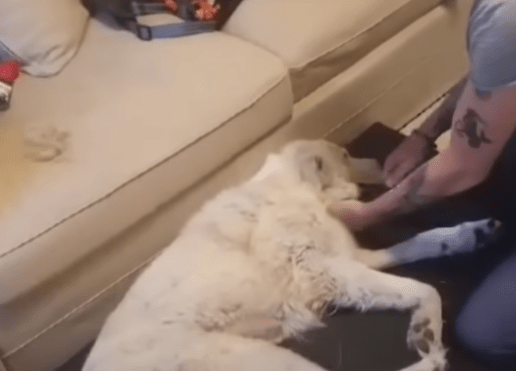
As I share her story, I know that somewhere out there, another animal may be waiting in silence, trapped, hurt, and unseen. May Blanca’s tale remind us to look, to listen, and to act—for every life matters.
Blanca and her pups are not just survivors. They are a family reborn.

